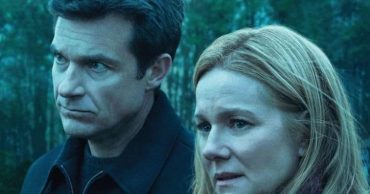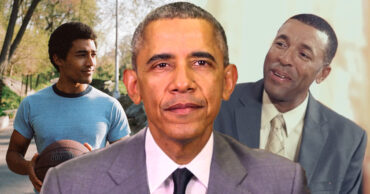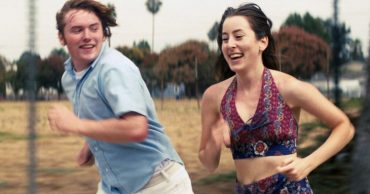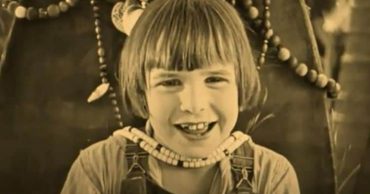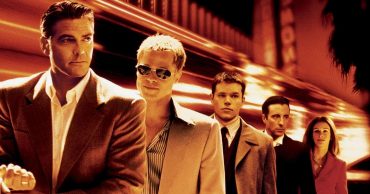
The year that saw the first-ever issue of Th New Yorker, the year that saw South Africa declaring Afrikaans as an official language, and also the year that saw John Baird conducting the tests of the first-ever working television set, there was indeed a lot happening in the year 1925. But if it was a memorable night out at the movies you sought, you would have found an equally impressive lineup of choices on this front too! From comedies to psychological thrillers, there was quite a list to choose from, and all you had to do was walk out of your homes and into a movie auditorium to witness it all. And to help you imagine the time a lot more vividly, here we are with our own list of choices in What A Night Out At The Movies In 1925 Would Have in Store For You!
The Freshman
Harold Lloyd was quite the age in the 1920s and yet another movie that saw this fearless actor exploring his own boundaries was the movie The Freshman. As was his usual choice, Harold took to the role of being an outsider in this film too, trying to win his way into the hearts of his peers as a college freshman by finding a place on the football team. And of course, what follows is a ride that only Harold could take us on! In fact, the movie saw Harold surpassing even himself in so many ways that The Freshman is tagged as one of his most successful works. And if you had chosen to watch this movie on one of your night-outs in the year 1925, you would also be contributing to the financial success that the film enjoyed, registering collections of a whopping $2.6 million against the $300,000 odd investment it took to produce it. Replete with the antics of Harold and showcasing the evergreen storyline of the underdog winning the day, choosing to watch The Freshman way back in 1925 would have been a wise choice indeed.
The Big Parade
War dramas, although heartbreaking and tragic, have often had quite an impact on audiences since films first started being made, and so it was with the war drama The Big Parade that was released in 1925. Starring John Gilbert, Renee Adoree, Hobart Bosworth, Tom O’Brien, and Karl Dane, the film revolves around the tragic circumstances that define every war, and has quite a few sad twists, from losing friends to bullets and bombs to losing one’s own arms and legs. But despite all the death and mayhem, what triumphs over everything else is the ability of one person to love another, and that is what proves to be the most refreshing aspect of the film. With the main protagonist falling in love with a stranger in a foreign land, life comes full circle when he goes out again in search of his lost true love after the war and finds her too. The Big Parade was a great success for the mix of emotions it brought to the audience, and even way back in 1925, raked in an impressive $20 odd million, against the humble $382,000 that was the original cost of production. And if it was Jim and Melisande’s beautiful love story amidst the mayhem of war that would have impressed you, The Big Parade would have made for the perfect movie for you indeed!
The Phantom of the Opera
The Phantom of the Opera has taken on several forms since Gaston Leroux first wrote his famed novel in 1910, and one of the first efforts in this direction was the 1925 film directed by Rupert Julian. Starring Lon Chaney, Norman Kerry, and Mary Philbin, the film revolves around the original plot of the infamous ghost that haunts the Paris Opera House, all in the effort to catapult the woman he loves towards stardom. Among other things, one of the most prominent news related to the film was the makeup that horrified audiences. From using putty and paint to using light to further magnify the horrendous lines that were deliberately applied to shock the audience, Lon Chaney took every liberty allowed to him to make an impact simply through his makeup. And boy did he succeed! So if it was a terror-filled and exciting evening filled with the horrors that only Lon Chaney could bring to the audience that seemed enticing to you for a night out at the movies in 1925, The Phantom of the Opera would have been a chilling yet enjoyable choice indeed!
Battleship Potemkin
The Russian Revolution was one of the most historical events of the beginning of the 20th century, and one of the key events that triggered the revolution was recognized as the mutiny that occurred on the decks of the Russian battleship named Potemkin or Potyomkin. In a movie that attempts to depict the happenings surrounding the event, Sergei Eisenstein brought to the audience his directorial work, Battleship Potemkin. And although we are sure that Sergei as well as his crew and cast must have known even at the time that they were indeed making a really good film, we doubt if even they knew that what they were creating would come to be regarded as one of the greatest movies of all time. In fact, even the revered British Film Institute labeled the film as the eleventh-greatest film of all time! Starring Aleksandr Antonov, Vladimir Barksy, and Grigori Aleksandrov, the film was divided into five acts — Men and Maggots, Drama on the Deck, A Dead Man Calls Out, The Odessa Steps, and One Against All — with the final act showing how the rest of the Tsar’s naval fleet refused to open fire on the mutineer sailors aboard the battleship, allowing the ship to pass by amidst loud cheering. If it was the triumph of the human spirit that you wished to see, all you had to do was walk into a theater in 1925 and buy movie tickets to the extraordinary film that was Battleship Potemkin.
Ben-Hur: A Tale of the Christ
With Ramon Novarro playing the role of Ben-Hur and Francis X. Bushman playing the role of the antagonist Messala, Ben-Hur: A Tale of the Christ was one of the most popular films of the year way back in 1925 and was particularly noted for being one of the most expensive films of the silent era, with production costs steadily rising throughout the making of the film. Of course, the finished product was as magnificent too! One of the most impactful sequences in the movie was, of course, the famous chariot race. And since this was a time when film sequences were measured in meters, you would be astonished to know that the original chariot race sequences were shot over 200,000 feet or 61,000 meters of film! Of course, not all of this could make it to the final cut so the chariot race was relegated to a relatively meager length of 750 feet or 230 meters. Regarded even to this day as one of the most impactful action sequences in movie history, while this race is all the reason you need to watch the movie, the rest of the magic created in Ben-Hur: A Tale of the Christ was just as entertaining too.
The Gold Rush
A silent comedy led by the inimitable Charlie Chaplin, The Gold Rush is one of the most poignant works from the brilliant comic actor, producer, and composer, and as were the rest of his works, carried a deeper message than most saw on screen. Depicting the times of the gold rush when people were at each other’s throats for money, and even resorted to acts of cannibalism to survive the harsh conditions they endured in the search for the evasive yellow metal, the movie is brought to life by the unmatched comic timing of Charlie Chaplin and the rest of the cast. Some of the most memorable sequences in the movie include the starving Charlie Chaplin dreaming of his show and his friend at Charlie and seeing a yummy chicken that was ready to be gobbled down. With Charlie Chaplin as the Lone Prospector, Mack Swain as Big Jim McKay, and Tom Murray as Black Larsen leading the way, you would have surely laughed your head off at the comedy as well as the foolishness of humans if you had to watch the movie The Gold Rush back in 1925.
Seven Chances
Buster Keaton was one of the other comedy stalwarts of the silent era who always left an impression in every movie he featured in, and this was again the case with Seven Chances, a movie released in 1925. Directed by Buster himself, the movie is based on the play by Roi Cooper Megrue that went by the same name. One of the rare movies to be partly shot in Technicolor at the time, these sequences in the movie were even more of a draw for audiences. Buster was popular for dishing out movies that were financial successes and Seven Chances was among them, cementing Buster’s name as a bankable star of the silent era. As was the case with most of his works, this one too had a highly energetic climactic sequence that saw high-adrenaline action and of course, Buster’s trademark gags. If it were a few laughs that you were on the lookout for, Seven Chances would have been the perfect choice for you during a night out at the movies in 1925.
The Merry Widow
The Merry Widow sounds like quite the ironic title for any work, and that’s only the beginning of all things interesting that were associated with this project. A story often adapted as films throughout the decades, the ballet adaptation of the original operetta saw several remakes starting from the year 1910, a film directed by Michael Curtiz, in the year 1925, this one directed by Erich von Stroheim, in 1934, directed by Ernst Lubitsch, in 1952, directed by Curtis Bernhardt, in 1962, in the form of an Austrian film directed by Werner Jacobs, a Russian black comedy in 1994, and finally, a 2007 French film adapted as a comedy. And all through the decades, the story of the merry widow seemed to only gather fans. As far as the 1925 film is concerned, this one was led by a star cast consisting of Mae Murray, John Gilbert, Roy D’Arcy, and Tully Marshall, and was mired in controversy from the start. The two main reasons were the director’s refusal to get along with the leading lady of the film, although critics who saw the final work praised him for “making an actress out of Miss Murray” as well as Eric von Stroheim’s independent decision to add sexually explicit scenes without the studio’s approval. Of course, none of this mattered to audiences, who loved the film and everything in it, making it one of the top successes of the year that was 1925.
Lady Windermere’s Fan
Oscar Wilde’s play was a mighty success when it hit the circuit in 1892, and thanks to its success, there were several works that drew inspiration from it, in turn leading to several remakes titled Lady Windermere’s Fan, ranging from the 1916 British comedy film, the 1925 American silent film, the 1935 German comedy film, and the 1944 Mexican film. We are, of course, referring to the 1925 film that was directed by Ernst Lubitsch. Led by a star cast consisting of Ronald Colman, May McAvoy, Bert Lytell, and Irene Rich, the film revolves around the antics of Lord Darlington, Lady Windermere, Lord Windermere, Mrs. Erlynne, Lord Augustus Lorton, and The Duchess of Berwick, with the entire storyline dramatically revolving around the fan of Lady Windermere! With interesting twists and turns to keep the audience interested at all times, Lady Windermere’s Fan may not have been a magnanimous success at the box office but it certainly proved to be one of the most enjoyable films of the year 1925.
The Joyless Street
The Joyless Street — labeled as The Street of Sorrow for release in the US — has the beautiful Greta Garbo bringing to life her second major role in the film industry, supported by a cast consisting of Asta Nielsen, Werner Krauss, Agnes Esterhazy, Henry Stuart, Robert Garrison, and Einar Hanson. A touching film that shows the plight of those who are poor, even depicting how it forces some women to sell their dignity all in the hope of getting some meat for their families, the entire premise of the film is based in an alley named Melchiorgasse in Vienna. Hence the name, The Joyless Street. Recognized as one of the classics, the film has several sad turns, bringing audiences to tears and revealing just how cruel life can be in some parts of the very city we live in. If it was a movie that touches your heart that you were seeking on a fine evening in 1925, you would have done your heart a favor by walking into a movie theater to watch The Joyless Street.
That’s What A Night Out At The Movies In 1925 Would Have in Store For You!
From romantic comedies and lively action movies to heartwarming stories and even heartbreaking ones, 1925 proved to be quite the year for films as far as the variety was concerned. In a silent era that was only just beginning to experiment with the technological advancements of Techni Color, these movies had a charm of their own and even today, watching them takes you back in time but also reminds you that when it came to cinematic brilliance, even the 1920s were not very far behind! We truly hope you enjoyed our list of What a Night Out at the Movies in 1925 Would Have in Store For You! We surely had loads of fun putting it together for you!
 Follow Us
Follow Us
